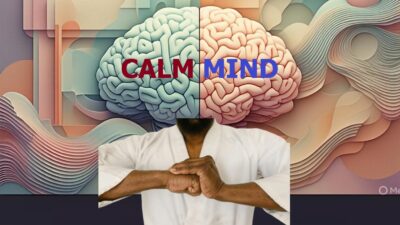In a fast-paced world full of distractions, embarking on a Self-Awareness Journey can open the door to profound personal insight. By taking time for reflective meditation and deliberate self-examination, you can understand your emotions, uncover hidden challenges, and appreciate both your strengths and imperfections. This article guides you step by step through methods, techniques, and real-life inspired narratives that illustrate how to embrace your truth in a sincere and transformative way.
Table of contents
1. Self-Awareness : Understanding the Concept
To begin your Self-Awareness Journey, it is essential to define what self-awareness means. In its simplest form, self-awareness involves recognizing your thoughts, emotions, and behaviors. You actively observe your inner workings rather than reacting impulsively to external events. For example, when faced with a challenging situation, you might notice the surge of emotions and ask yourself, “What is the source of this feeling?” This active inquiry transforms every experience into an opportunity for growth. Therefore, by embracing this process, you develop a more balanced perspective of your inner world.
Furthermore, self-awareness underpins personal growth. When you understand your habitual responses and triggers, you gain the clarity needed to change unhelpful behaviors. Moreover, this clarity refines your decision-making process, fostering an environment in which honest self-reflection leads to meaningful change. In this way, every moment offers the potential to redirect your path toward a more fulfilling life—all through the power of the Self-Awareness.
2. Self-Awareness Journey: Techniques for Reflective Meditation
Developing reflective meditation techniques can enrich your Self-Awareness in practical ways. The following techniques provide a toolkit that allows you to examine your daily experiences and deepen your inner insight:
- Reflective Journaling: Begin by setting aside 10–15 minutes each day to journal your thoughts and feelings. As you write, describe situations that stirred you, detail the emotions you experienced, and pinpoint the triggers. For instance, you might note, “During a quiet moment after lunch, I felt an unexpected pang of regret when recalling a past decision.” By writing these thoughts down clearly and honestly, you chart a course toward deeper self-understanding.
- Contemplative Silence: Choose a calm period—perhaps early in the morning or late in the evening—when your mind is most at ease. Sit comfortably, close your eyes, and observe your breathing. As your thoughts arise, acknowledge each one without judgment. This exercise not only quiets external noise but also enables you to notice subtle patterns within your emotional and mental landscape. Consequently, contemplative silence becomes a cornerstone of the Self-Awareness .
- Guided Reflection Prompts: Use carefully crafted questions to stimulate introspection. Ask yourself, “What recent moment did I feel most alive?” or “How do my actions align with my personal values?” Answering these prompts with honesty encourages a detailed exploration of your inner state. Over time, such questions can help you identify recurring themes and areas that need attention, thereby enriching your overall reflective practice.
Each of these techniques engages your senses and intellect in a purposeful manner, ensuring that every reflective session becomes a step forward on the Self-Awareness Journey. As you explore these methods, you will notice that consistent practice results in sharper insight and more intentional decisions in your everyday life.
3. Self-Awareness: Practical Examples of Reflective Experiences
Sometimes, theory becomes much more tangible when illustrated by real-life inspired narratives. Consider these detailed stories that map out transformative moments on the Self-Awareness:
3.1 A Morning of Quiet Discovery
Imagine waking before dawn in a modest, quiet room. Self-Awareness begins as you sit at a small table with a blank journal and a pen. The first light of day spills through a nearby window, and you feel both calm and curious. You start by writing about your sleep—a dream, a small anxiety that crept upon you. With each word, you gradually peel back layers of suppressed emotion. For example, at 5:15 AM, you remember a minor conflict with a friend that unsettled you the previous day. As you detail your feelings moment by moment, you discern patterns: perhaps a recurring sense of unease linked to past experiences.
In this reflective moment, every heartbeat feels deliberate. Therefore, you take a deep breath and ask, “Why did that conflict affect me so deeply?” Slowly, memories surface—reminders of previous disappointments and unmet expectations. You note these down, connecting them with a lineage of similar feelings. By 5:45 AM, you have transformed scattered thoughts into a coherent narrative about vulnerability and growth. This experience exemplifies how a single morning can lay the groundwork for long-term emotional balance on your .
3.2 A Critical Evening Revelation
Later in the day, picture an individual named Alex who schedules a dedicated hour after work for reflective meditation. Alex chooses a quiet corner of the house, lights a candle, and sits in silence. At 8:00 PM, as the world outside begins to quiet, Alex starts recounting the day’s events in a mental journal. Every interaction and feeling is meticulously recalled. At 8:10 PM, Alex focuses on a conversation that left him feeling uneasy. With each passing minute, he replays the words exchanged, noting not only their literal meaning but also the underlying emotions.
By 8:30 PM, Alex shifts his attention inward, asking himself probing questions such as, “What does my hesitation reveal about my inner fears?” As he answers these queries, his pulse steadies. Gradually, a sense of understanding emerges—he identifies a deep-seated worry related to his self-worth. Alex continues this reflective process until 8:45 PM, concluding that acknowledging his vulnerability is the first step toward healing. This vivid, moment-by-moment reflection illustrates that the Self-Awareness rests on honesty, patience, and the willingness to delve into one’s own emotional depths.
3.3 Daily Reflection as a Transformative Ritual
Another inspiring example involves a person who integrates reflection into daily routines. Each evening at 7:00 PM, without fail, this individual sits in a quiet space devoid of distractions. During this time, they recount the day chronologically, noting moments of joy and sorrow alike. For instance, when encountering a minor setback at work, they record not just the event, but also the surge of frustration it sparked and the subsequent introspection that led to a lesson learned. With each recorded detail, the narrative grows richer, providing insights into recurring behaviors and thought patterns.
This sustained practice eventually reveals a roadmap of personal strengths and weaknesses. Moreover, by consistently placing the practice at the center of daily life, the individual reinforces commitment, making this reflective ritual an integral part of their Self-Awareness Journey. The experience becomes not just an exercise in introspection but a transformative daily conversation with oneself.
4. Self-Awareness : Implementing Reflective Exercises
To solidify your Self-Awareness Journey, you will find that structured exercises help translate fleeting reflection into sustained awareness. Below are several practical exercises you can incorporate into your daily routine:
- Morning Mindset Check: Each morning, spend five minutes writing down your intentions for the day. Ask yourself what you hope to feel and experience. This ritual sets a positive tone and primes your mind for the challenges ahead.
- Evening Reflection Review: At the end of the day, review your journal entries. List three moments where you felt particularly challenged and three moments where you felt empowered. Compare these reflections over time to trace your emotional progress.
- Self-Inquiry Prompts: Establish a set of guiding questions. For example: • What triggered a strong emotional response today? • How did I handle a difficult situation? • What can I learn from today’s experiences? These questions encourage you to consistently probe the depths of your daily interactions.
Additionally, consider the following table that summarizes a few reflective exercises:
| Technique | Description | Benefits | Time Required |
|---|---|---|---|
| Reflective Journaling | Write detailed accounts of daily emotions and experiences. | Clarifies thought patterns and emotional triggers. | 10–15 minutes/day |
| Contemplative Silence | Sit quietly and observe your breathing and fleeting thoughts. | Calms the mind and fosters internal observation. | 5–10 minutes/day |
| Guided Self-Inquiry Prompts | Answer predetermined questions to dive deeply into your internal state. | Reveals hidden insights and recurring themes. | 10 minutes/day |
By incorporating these exercises into your routine, you actively engage in continuous self-scrutiny. Consequently, these habits will gradually transform your Self-Awareness into a dynamic process of self-improvement and emotional balance.
5. Self-Awareness : Transforming Reflection into Lasting Change
An authentic Self-Awareness Journey does not end merely with reflection; it transforms into a catalyst for lasting change. After you accumulate insights through reflective practices, the next step involves translating awareness into actionable steps. Here are some strategies to ensure your reflections yield tangible results:
- Set Targeted Goals: Based on recurring themes in your journal—such as a tendency to avoid confrontation or to overreact in stressful situations—set clear, measurable goals. For instance, if you identify that impatience frequently hampers your interactions, commit to pausing in moments of frustration and taking three deep breaths before responding.
- Develop Action Plans: Once you have set your targets, create specific action plans. Write down the steps you will take to overcome identified barriers. For example, if you notice that self-doubt limits your potential, plan weekly affirmations and seek constructive feedback from trusted peers. This approach ensures that your Self-Awareness Journey evolves into a proactive process where insights lead to growth.
- Regular Self-Reviews: Schedule regular intervals—weekly or monthly—to assess your progress. Evaluate whether your goals are being met, and adjust your strategies as needed. By continuously reviewing your progress, you remain accountable to your own growth. Furthermore, this habit reinforces the discipline essential for a sustained Self-Awareness.
- Celebrate Small Wins: Every breakthrough, no matter how incremental, deserves recognition. When you notice an improvement in how you respond to a stressful situation or feel more balanced in your emotions, acknowledge it. Celebrating these moments reinforces positive change and fuels further progress.
For example, consider Sam—a diligent professional who discovered through nightly reflections that he tends to bottle up emotions until they erupt in overwhelming stress. Determined to change, Sam set a goal to voice his feelings in small ways throughout the day. Over the course of several months, his regular self-reviews and adjustments led to a noticeable improvement in both his mood and interpersonal relationships. Sam’s journey demonstrates that consistent, reflective effort genuinely transforms one’s inner life and interactions.
Conclusion
The Self-Awareness Journey is an ongoing process that invites you to meet yourself with honesty and compassion. By understanding the fundamentals of self-awareness, embracing reflective techniques, and integrating practical exercises into your daily routine, you pave the way for lasting personal transformation. Every detailed moment of introspection, whether it occurs in the quiet early morning or as a reflective pause after a challenging event, contributes to a deeper understanding of who you truly are.
Therefore, as you move forward on your Self-Awareness, remember that each step matters. Embrace reflective practices, set actionable goals, and regularly revisit your progress. In doing so, you will unlock the transformative power of self-awareness, leading you toward a life defined by clarity, acceptance, and continual personal growth.
This comprehensive guide offers a practical roadmap enriched with detailed scenarios and exercises. By applying these insights and techniques, you can begin your Self-Awareness Journey today, equipped with the tools and inspiration needed for long-lasting change. Enjoy every step as you embrace your truth and transform your inner world!
References
Warning: The provided links lead only to the specified content. Other areas of those sites may contain material that conflicts with some beliefs or ethics. Please view only the intended page.
- Self-Awareness: 13 Examples You See Throughout Life – Real-life examples illustrating self-awareness in different situations.
- Reflecting for Self-Awareness | Reflection Toolkit – A collection of reflective activities and questions for developing self-awareness.
- 50 Examples of Self-Awareness for Personal Growth – A detailed exploration of self-awareness strategies and their benefits.






